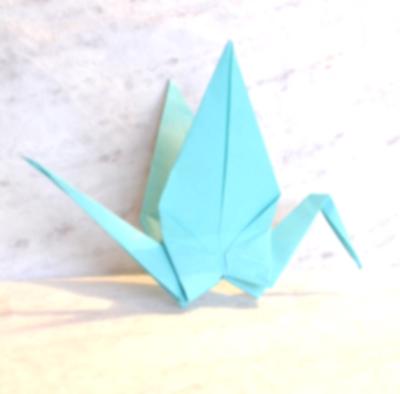Origami Cranes and the Termination of Psychotherapy
by Lucy Holtzman, mps/atr-bc/lcat
(Brooklyn, NY)
Ending a therapeutic relationship is difficult: both for me, the therapist, and for my clients. Obviously, it's great when someone no longer needs to be in therapy. But sometimes the relationship ends because I'm moving on to a new position, or the patient might be moving out of town, or any number of other life changes that make it impossible for us to continue meeting. In any event, termination of therapy is a time of mixed emotions, especially after sharing so many of life's intimate details and feelings. And, going off into the unknown (life without therapy) is often a bit scary for most of us.
For the past few years, I've used origami cranes to help ease this transition. Calling on the Japanese tradition of Senbazuru and its legend that folding one thousand paper cranes will bring the fulfillment of a wish, I add my own personal twist.
Whenever a patient leaves my care, I make him/her a paper crane, choosing from the most beautiful origami papers in my collection. When we meet for our final session, I explain Senbazuru and share that while it's quite clear that neither one of us has folded the requisite thousand paper cranes, I give the crane that I've folded with my most fervent wishes for the client's future happiness, health, and peace of mind.
In a profession where the exchange of personal gifts is frowned upon, the presentation of a beautiful origami crane allows me to give my client something simple from my heart to take with them.
Comments for Origami Cranes and the Termination of Psychotherapy
|
||
|
||
|
||
|
||
|
||

